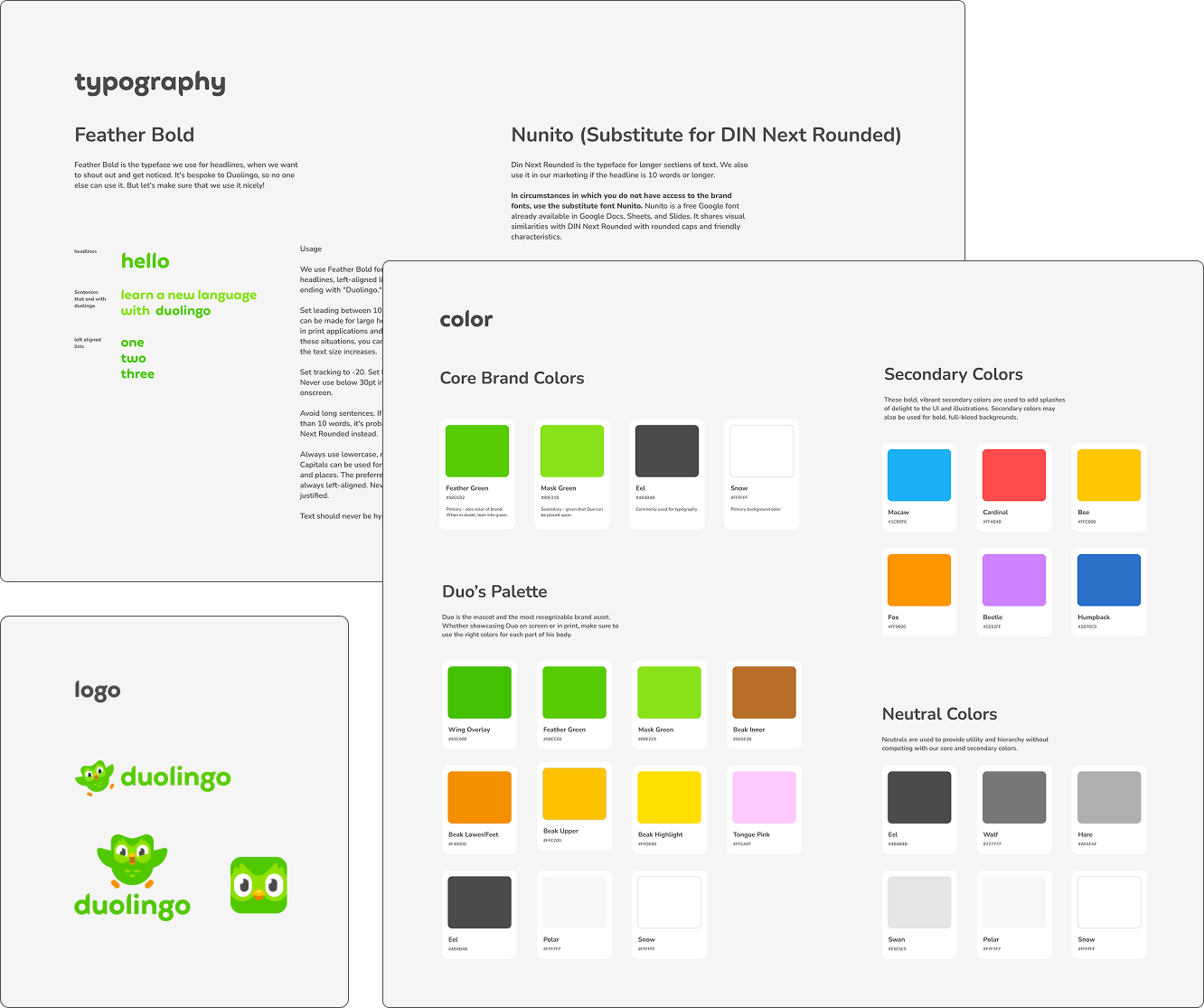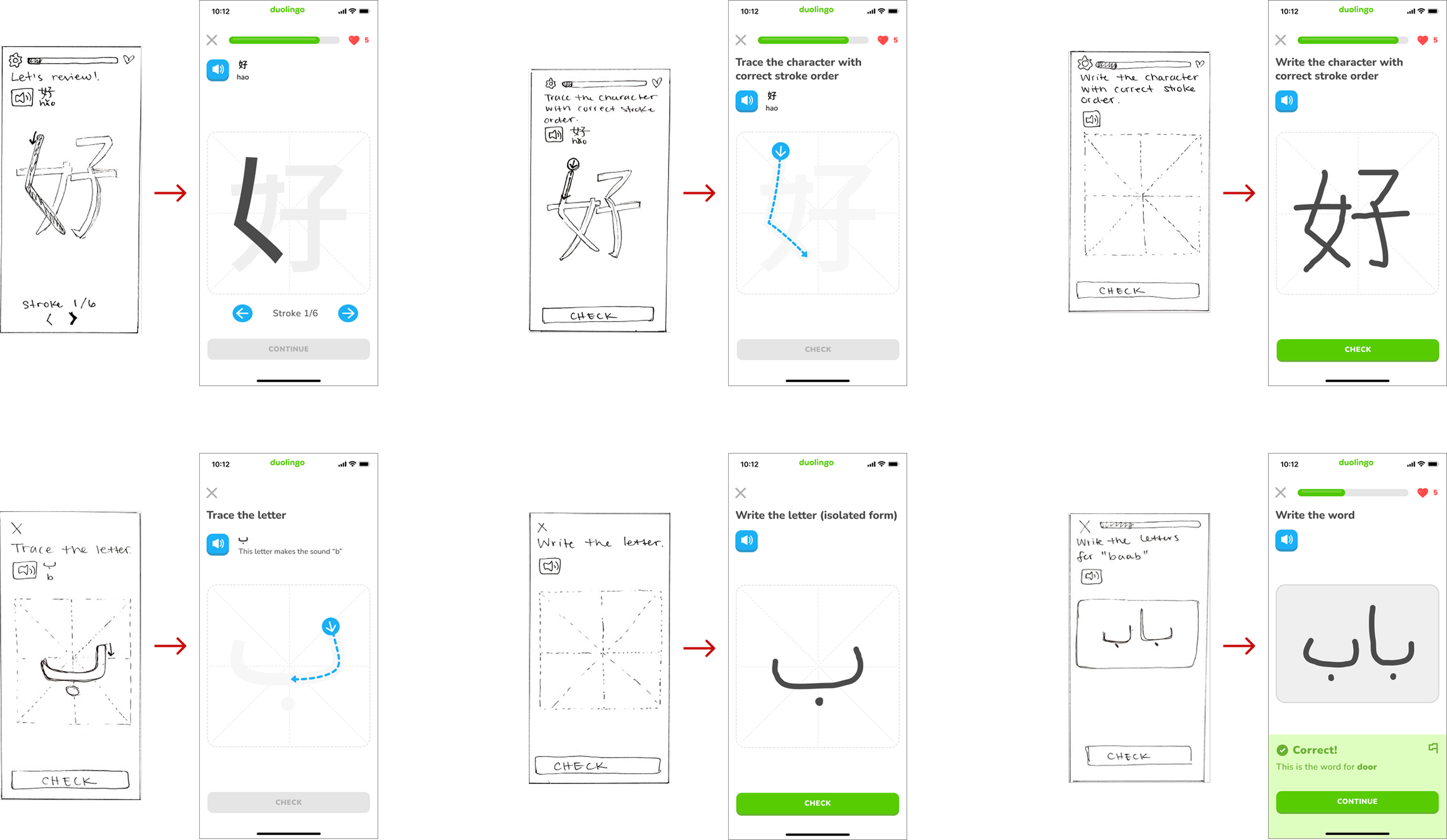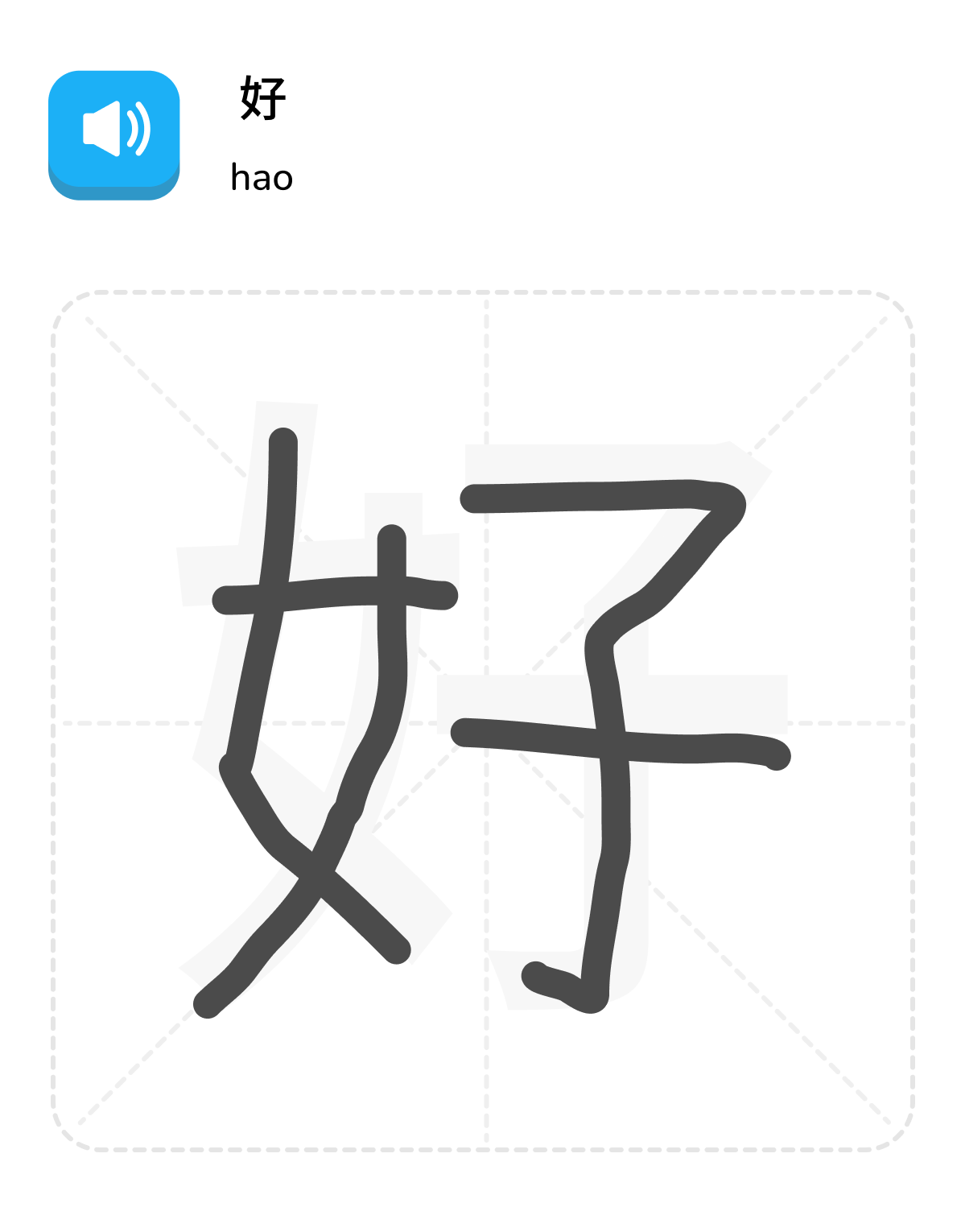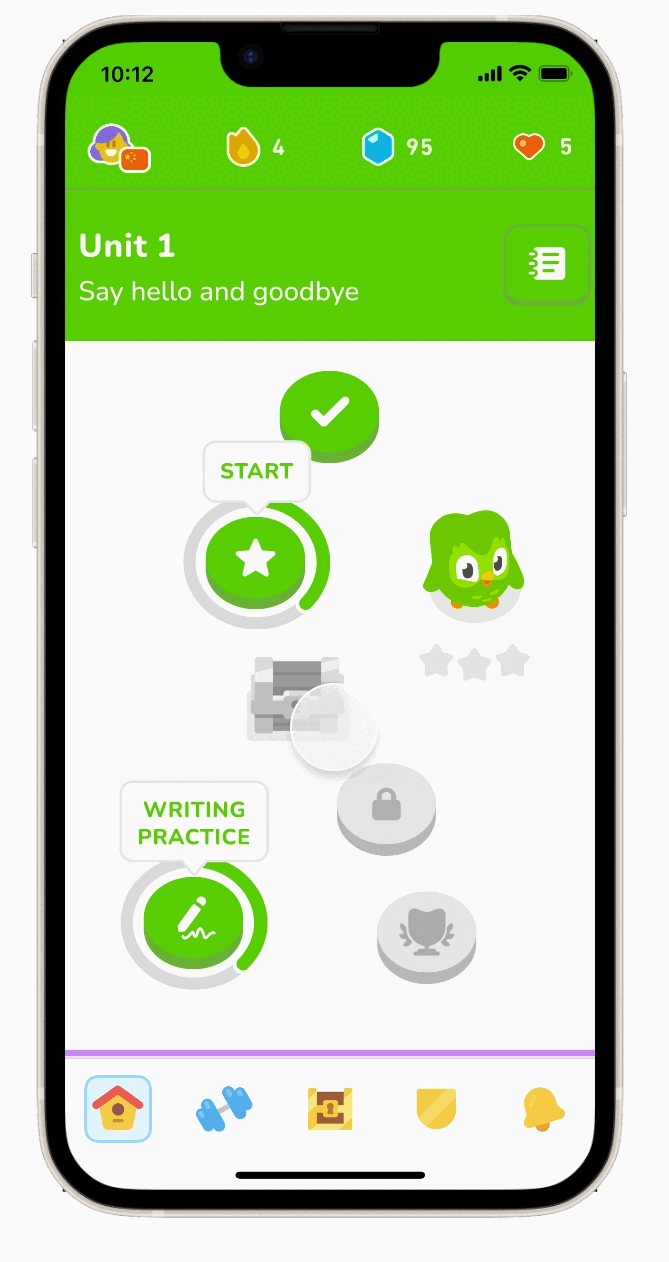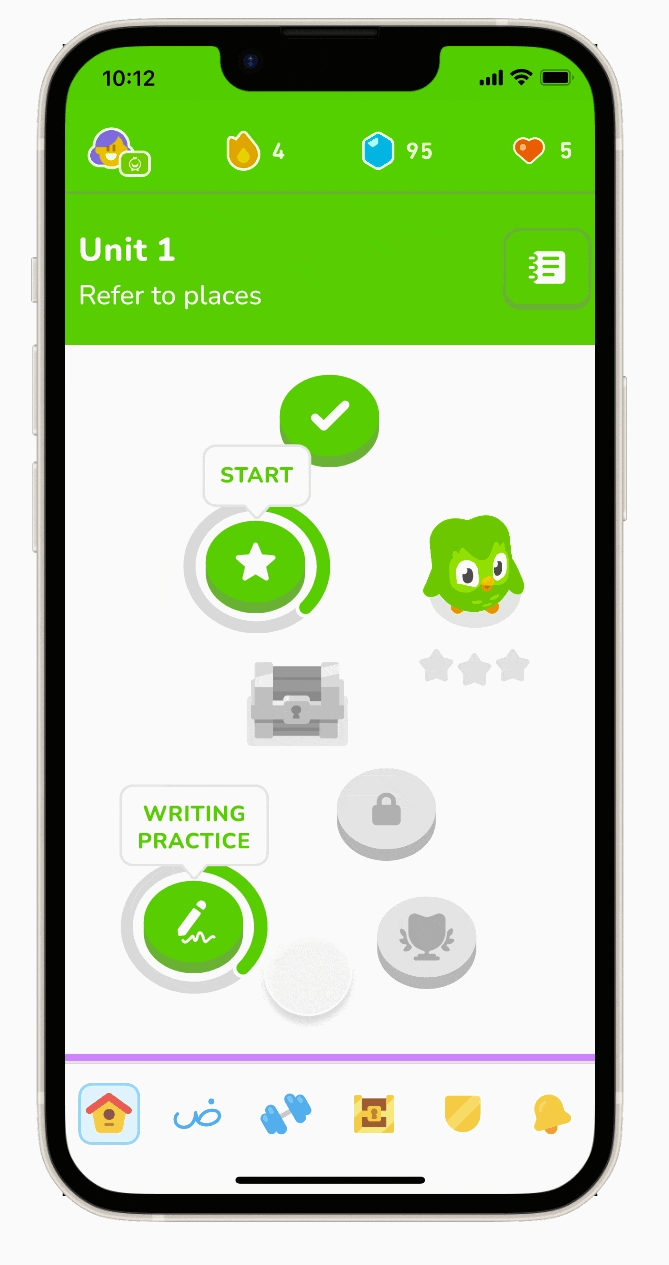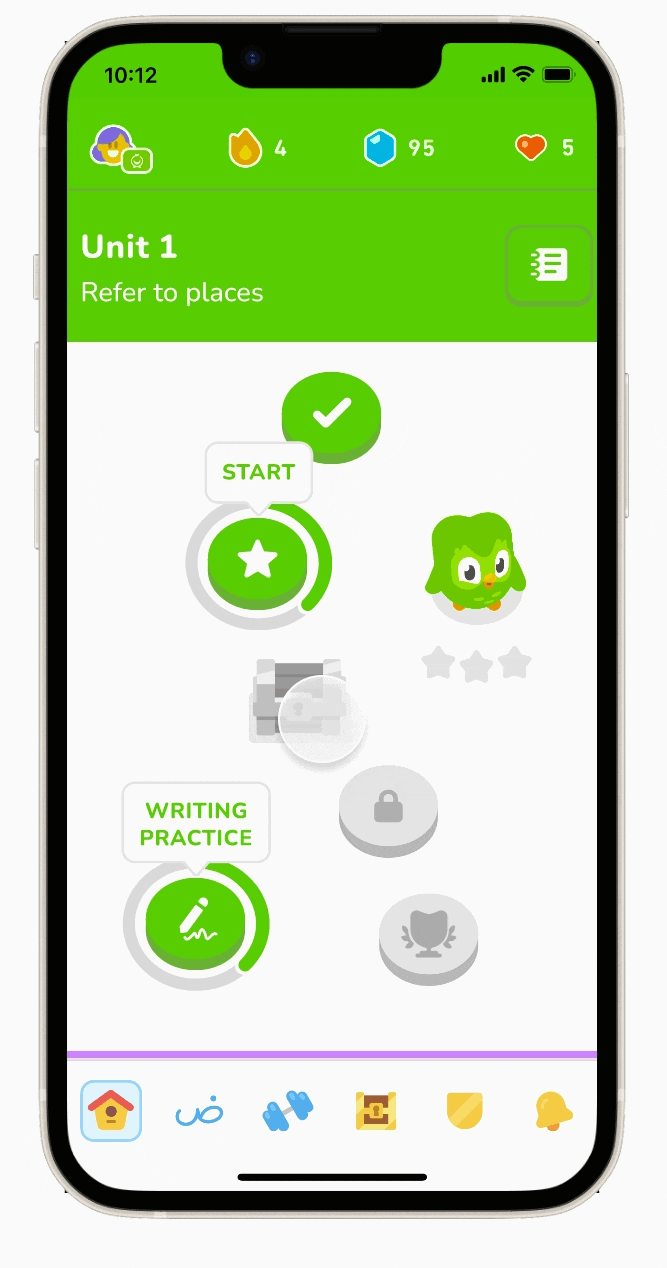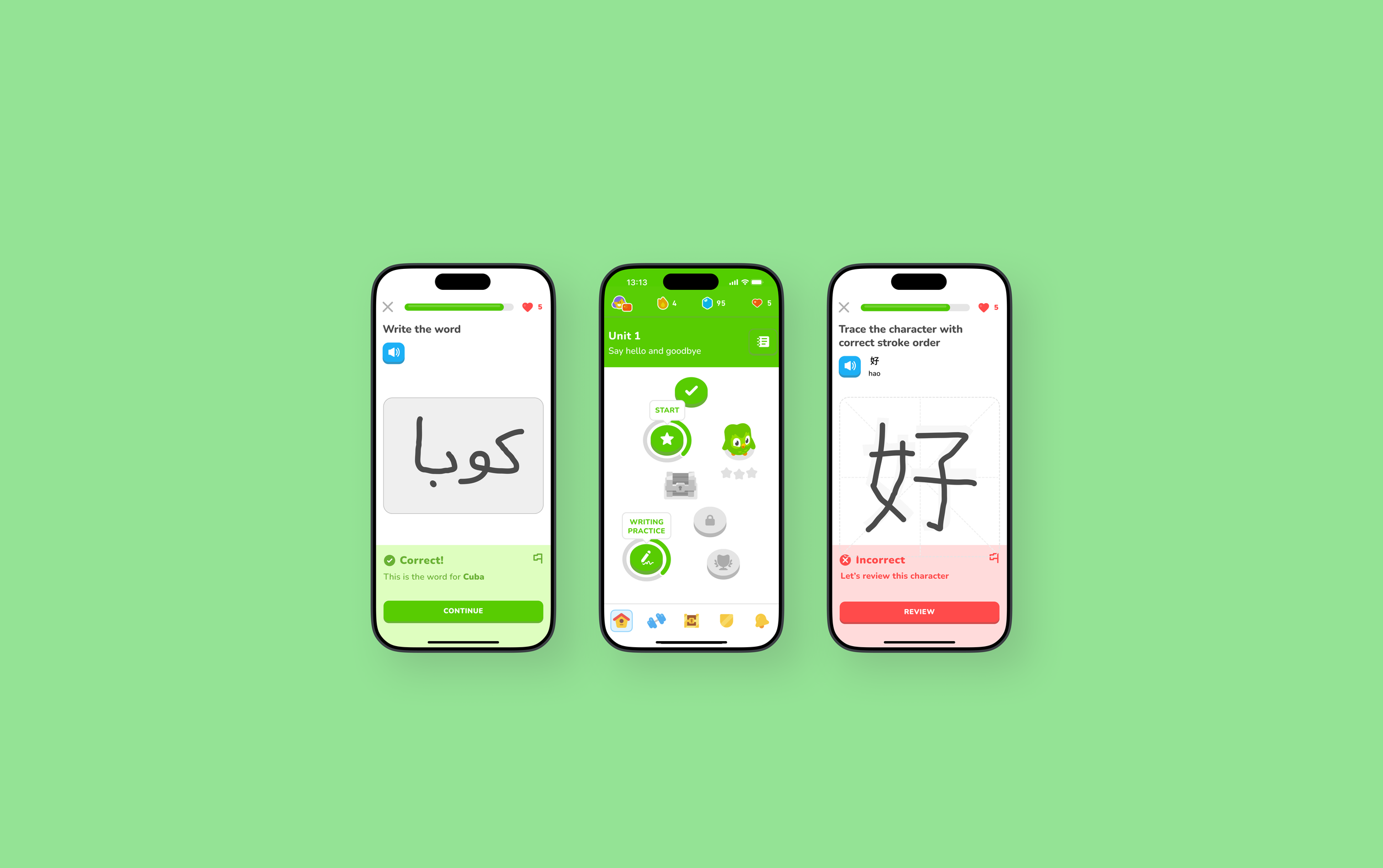
Duolingo
📌 Overview
I designed a handwriting feature for Duolingo to support character-based language learners. Over 4 weeks, I led research, design, and usability testing to validate that writing practice boosts memory retention and improves learner engagement.
The final prototype—built in Figma and tested with Arabic and Chinese users—achieved 100% task success and revealed opportunities to improve accessibility through clearer audio/text prompts.
PROJECT TYPE
Adding a feature to the existing app, Duolingo
ROLE
Sole UX researcher + designer (with support from my mentors, Rafael Madrid and Lucy Bonner)
TIMELINE
4 weeks, 80+ hours
TOOLS
Figma, FigJam, Adobe Creative Suite
🚀 The Opportunity
Duolingo excels at gamified language learning but lacks tools for writing practice—critical for languages like Chinese and Arabic. Research suggests that handwriting improves memory retention, yet this modality was missing from the experience.
🎯 The Mission
I designed and tested a handwriting feature that integrates into Duolingo’s gamified learning path, supports multiple scripts and writing systems, and reinforces memory, comprehension, and engagement through active character practice.
🔍 Research
Exploring the literature
Secondary Research:
Reviewed neuroscience studies highlighting how handwriting activates unique brain regions and improves retention—especially for logographic languages.
Identified the importance of correct stroke order in character-based languages, showing it enhances writing speed, recognition, and literacy.
Analyzed competitor apps and found a lack of dedicated handwriting exercises.
User Interviews
Participants (n=6, ages 23–65):
100% reported that they felt handwriting supported memorization.
80% said language apps lacked this feature but wished it were included.
Key gap: users missed the tactile reinforcement they received in classroom settings.
Takeaways ➡️ Design Goals
Seamlessly integrate writing into Duolingo’s gamified UI.
Accommodate different language structures (e.g., Chinese stroke order vs. Arabic letter shapes).
Support multiple interaction types: tracing, stroke-by-stroke, and free writing.
Maintain alignment with Duolingo’s playful brand and accessibility guidelines.
✏️ Define
User-Centered Foundations
Developed detailed user personas representing diverse learners, including beginner and intermediate speakers of Chinese and Arabic.
Created a site map to visualize integration points within Duolingo’s existing app structure.
Mapped user flows to outline the writing practice journey from lesson introduction through feedback.
🎨 Design
Sketches
I began by sketching key wireframes to quickly visualize the handwriting feature’s layout, core functionality, and user flow.
Why? This process helped me align with Duolingo’s interface patterns and style guide while shaping the feature’s foundational structure.
Added an optional “Writing Practice” button to each unit on the home screen for easy, visible access to handwriting lessons
For Chinese, I designed three phases to build retention and fluency:
Learning stroke order
Tracing characters
Independent writing
For Arabic, users select a letter on the "Learn the Letters" screen to access its lesson.
Arabic lessons also included three phases:
Tracing letters
Independent writing
Combining letters into words.
Branding & UI
I aligned the handwriting feature with Duolingo’s design language, using existing UI patterns like progress bars, gamification, and color-coding to ensure visual and interaction consistency.
Early UI components in Figma ensured consistency and enabled a realistic prototype. Reusing Duolingo’s design library made the feature feel like a natural, cohesive extension of the app.
High-fidelity wireframes
Utilizing Duolingo’s established design system, I developed high-fidelity wireframes tailored to both the Chinese and Arabic language versions of the handwriting feature.
🧩 Prototype
Audio & visual
I created prototype videos in Figma showing realistic handwriting motion and embedded them into wireframes.
Additionally, adding audio prompts to supported pronunciation and multimodal learning.
Usability testing
Chinese learners completed the optional writing practice in Unit 1.
Arabic learners practiced writing the letter "ب" on the alphabet page before doing the same Unit 1 writing task.
Successes:
100% of users successfully completed the assigned tasks for both Chinese and Arabic language versions.
Pain Points:
50% of Arabic users found the audio-paired writing prompts unclear, citing confusion about what to write.
🔄 Interate
Improvements & revisions
To reduce ambiguity, audio prompts were changed to state the letter name instead of just the sound.
Clarifying text was added to explain the sound and specify the letter form to write.
To add variety, some original audio files were kept, with prompts reworded to: “Write the letter that makes this sound.”
Final Prototype
Chinese Language
Task: Complete the optional handwriting practice in Unit 1.
Arabic Language
Task 1: Learn how to writing letter “ب” via the alphabet page
Arabic Language
Task 2: Complete the optional handwriting practice in Unit 1.
Final Thoughts
🧠 What I learned
This project deepened my understanding of designing for non-Latin scripts and multimodal interactions. It reinforced the importance of aligning new features with existing UI systems and showed how iterative testing leads to more accessible, user-centered solutions.
⏳ If I had more time…
With more time, I would explore opportunities for users to practice constructing full phrases or sentences as their language proficiency advances. As our society continues to evolve digitally, I hope future generations preserve handwriting as a powerful tool for deepening understanding and enhancing learning.
















